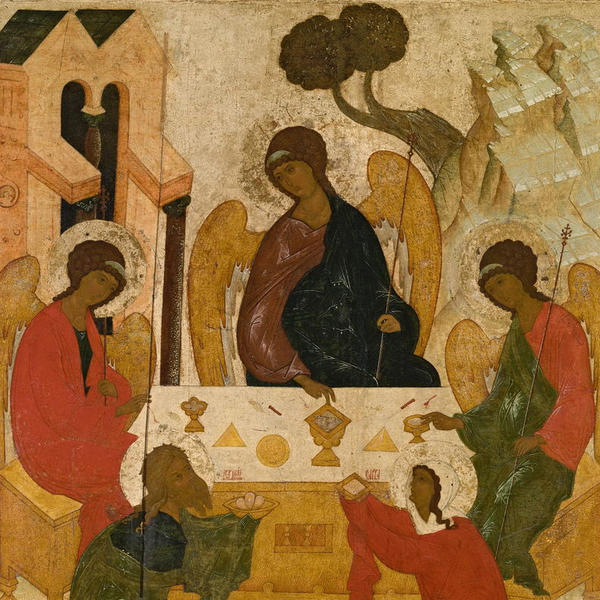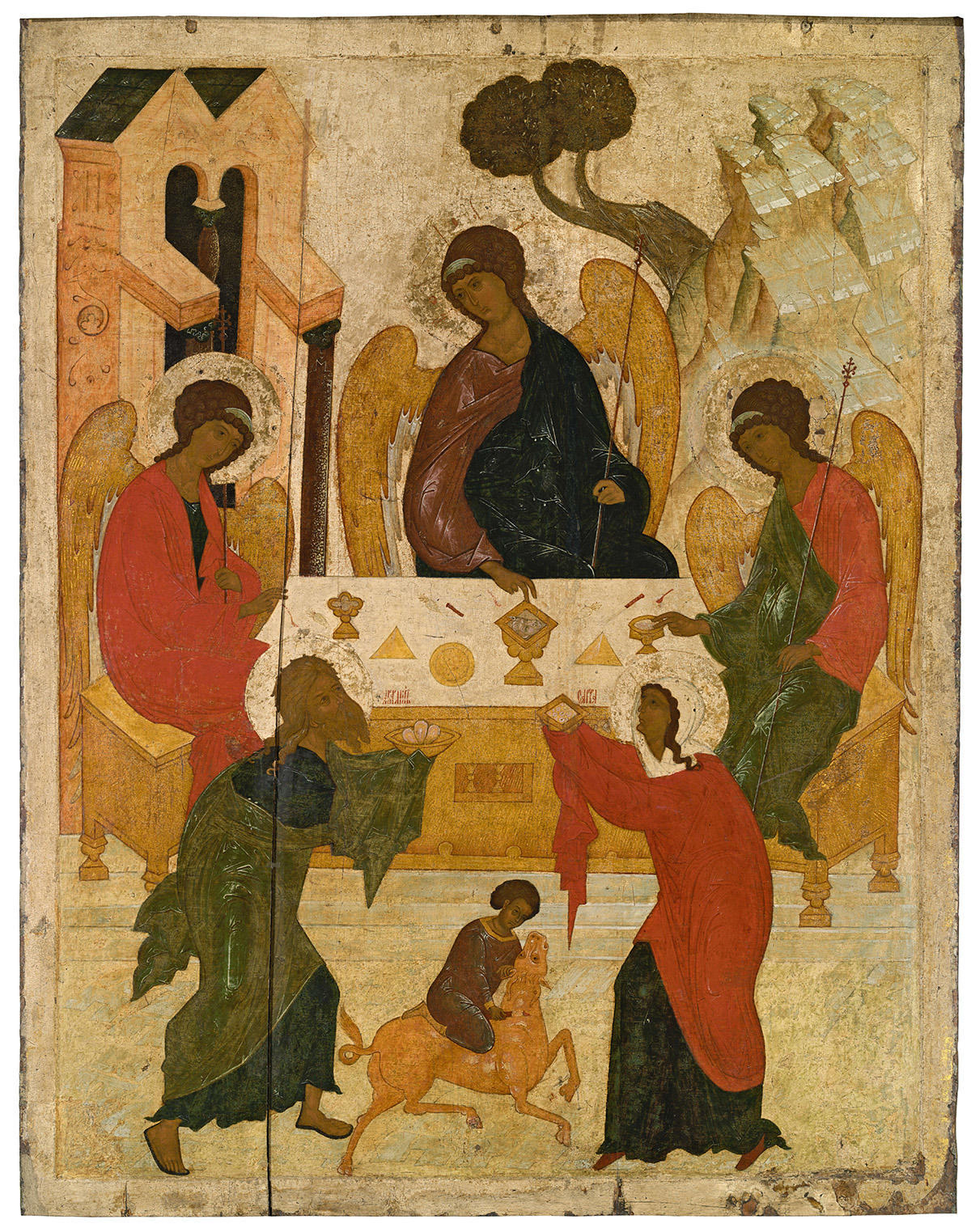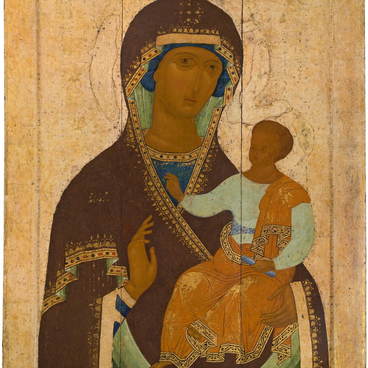The Novgorod school of icon painting is the oldest and the most peculiar in Russia. It absorbed many tendencies. As Novgorod was not affected by the Tartar-Mongol yoke, its icon painting school preserved the traditions of pre-Mongol painting, similar to Byzantine. By the 16th century, Novgorod icon painters added began to add a touch of local folklore to their works.
Old Testament Trinity
Creation period
1530–1540
Dimensions
149x113,5 cm
Technique
Primer and tempera on wood
Collection
Exhibition
109
Open in app#1

Unknown Author
Old Testament Trinity
#2
#3
Primitivism was a distinctive feature of that school. The composition of icons was simple, without extra figures or details. The colors were bright, pure and contrasting. Cinnabar, a bright red pigment, was the favorite one of Novgorod painters. All that is reflected in the Old Testament Trinity icon, painted by an unknown artist in the years 1530-1540.
#4
The image of the Holy Trinity was one of the most common ones in Orthodox icon painting. The Old Testament story tells about how God appeared to the 100-year-old patriarch Abraham in the likeness of two wanderers that were angels. Abraham and his wife Sarah did not recognize the guests but welcomed them. The angels predicted to the couple the birth of a son, Isaac.
The Trinity is the basic concept of Christianity, according to which God is one in three persons: the Father, the Son and the Holy Spirit. The Orthodox Christianity affirms that God is inconceivable and has never been seen by anyone; therefore He is represented symbolically as three Old Testament angels.
#5
The author painted the Trinity in the traditional order, from left to right: first the Father, then the Son and the Holy Spirit. The landscape is not accidental and comprises important Christian symbols. Behind the back of the angel with the Father’s features, we can see a house, a symbol of the creating force. Behind the angel in the middle, there is a tree, a symbol of life and resurrection. On the right, behind the third angel’s back, we can see a mountain that symbolizes sublime spirit.
#6
Besides that, over the head of the wanderer that represents Jesus there is a cruciform halo. Inside it, we can see a cross and Greek letters ΟΩΝ that mean ‘He who is’. In icon painting, such a halo was a distinctive characteristic of Christ.
#9
After The Trinity by the famous Moscow icon painter Andrei Rublev, the new tradition was to paint the scene without Abraham and Sarah. However, the Novgorod artist made his painting closer to its origins: he painted how Abraham and Sarah offer the food to the guests, and their servant kills a calf for the meal.
The Trinity. Andrei Rublev. State Tretyakov gallery
#10
All the figures represented in the icon fit into a circle. Such composition reminds us about the philosophic essence of the Trinity, the fact that it has no beginning and no end. The color scheme of the icon also forms a circle of alternating colors.
#8
In The Trinity, as well as in most icons, inverted perspective is used. Unlike single-point perspective, inverted perspective implies that figures that are farther from the spectator look bigger and not smaller. In this way, the author emphasizes their importance and, in a certain way, opens a window into the divine world.
#11
State Russian Museum
read morehide
00:00
00:00
1x
Old Testament Trinity
Creation period
1530–1540
Dimensions
149x113,5 cm
Technique
Primer and tempera on wood
Collection
Exhibition
109
Open in app
Share



